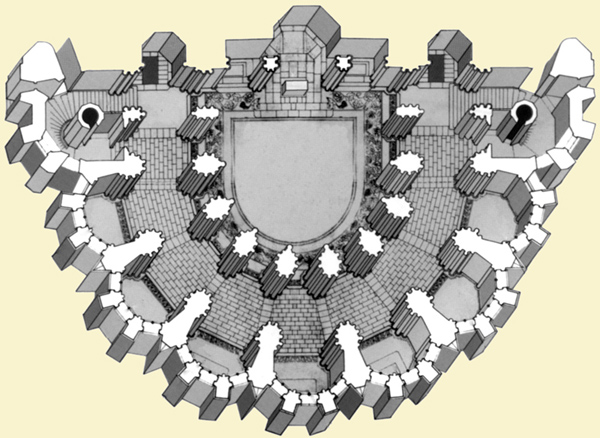|
|
|||
|
La Cripta / The Crypt |
|||
|
1885
|
 Fue diseñada por Francesc de Paula Villar en estilo neogótico y Gaudí la aprovechó como base del Presbiterio de su proyecto, pero no pudo variar la estructura, lo que le impidió alinear el Crucero con la salida y puesta del sol. La Cripta esta escavada en en suelo bajo el Ábside, por tanto tiene la misma disposición que este. Se compone de siete capillas, un deambulatorio y un área central enfrente de la cual se encuentran otras cinco capillas. En la Cripta se hallan las sepulturas de Josep Maria Bocabella, el promotor del templo, sus descendientes y Antoni Gaudí. La Cripta tiene rango de parroquia y posee su propio culto. The Crypt was designed by Francesc de Paula Villar with a neogothic style and Gaudi used it as the basis of the Presbytery of his project, but he could not change the structure, which prevented him to align the Cruise with the rising and the setting of the sun. The Crypt is dug into the ground under the Apse, therefore it has the same layout as this. It consists of seven chapels, an ambulatory and a central area in front of which are five chapels. In the Crypt are the tombs of Josep Maria Bocabella, the promoter of the Temple, his descendants and Antoni Gaudí. The crypt holds the rank of parish and has its own cult. |
 |
|
|
|
|||

